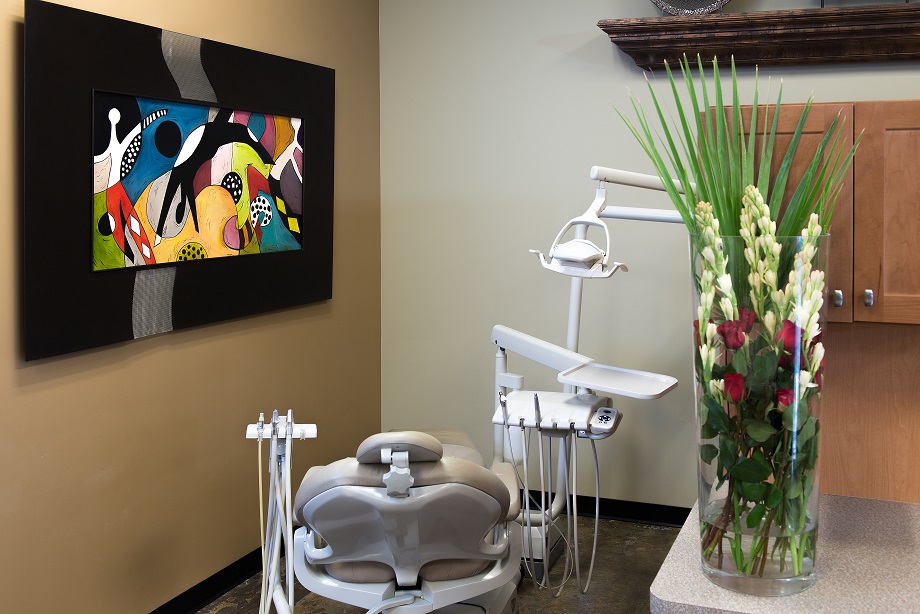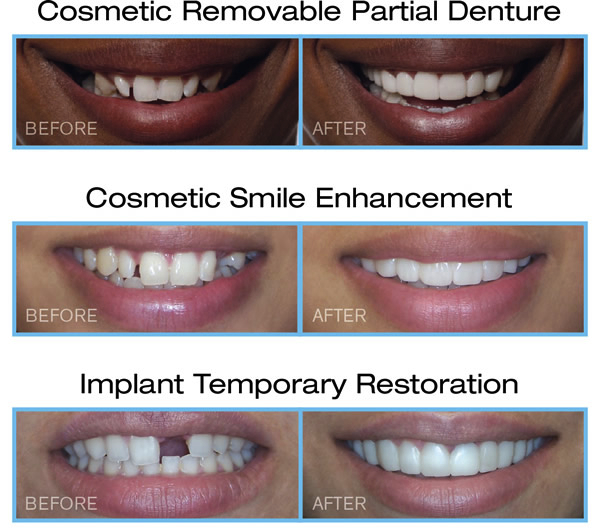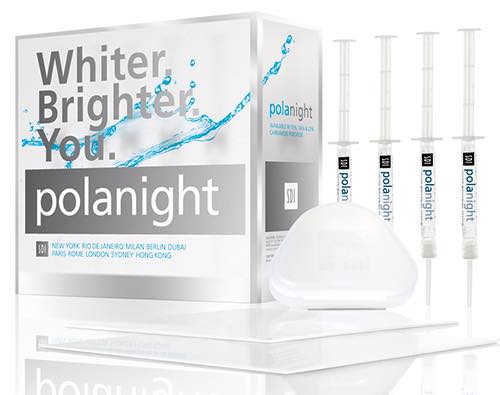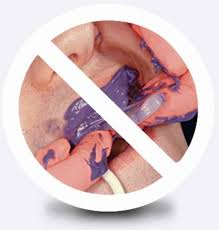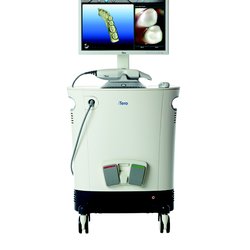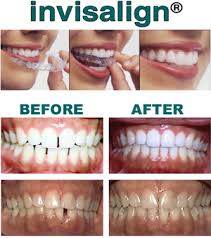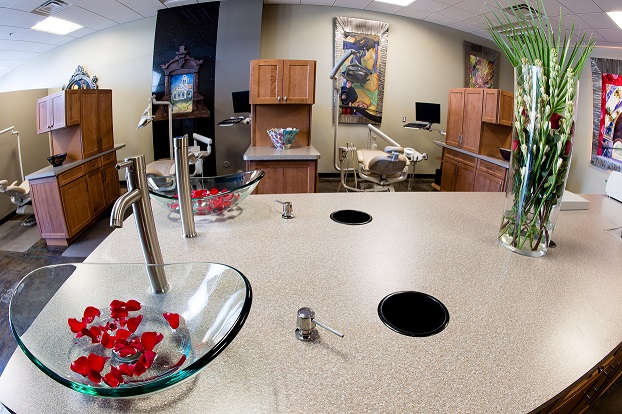 |
COSMETIC DENTISTRY
COSMETIC DENTISTRY
This can be anything done to correct imperfections in the appearance of the mouth. Anyone who is unhappy with their smile can have it fixed. The upper teeth show, usually, only when smiling, while the lower teeth remain hidden. This is reversed when talking, with the upper teeth remaining hidden while the lower teeth show. The color, alignment, spacing as well as regularity of the teeth are the characteristics that give the overall appearance. Any of these can be repaired to give a stunning look to the mouth. |
|
Crowns
Crowns are full coverage restorations that are used to cover a tooth that is likely to break, or is too broken down to be restored with a filling. They are most commonly done after root canal treatment, or when a large filling wears out. The larger the hole made by a cavity that has to be treated, the more likely a crown will be needed. Even after a filling is put in a large cavity, a tooth is more likely to break. Keep in mind that the jaw muscles are the strongest in the human body. Teeth are subjected to tremendous pressures. Crowns ride over the weakened tooth, providing strength and protecting the tooth against breakage. A broken or cracked tooth is a far more serious matter and much more difficult to treat. Crowns prevent this, as well as making for a nice smile. It takes two appointments to restore a tooth with a crown. In the first any decay is removed from the tooth and it is shaped to accept the crown. Then an impression is made of the tooth for use in fabricating a crown. Between the two visits the crown is made, usually of high-strength porcelain over gold alloy, all ceramic material, or gold. During this time a temporary crown is worn. In the second visit this temporary is removed. Then the permanent crown is adjusted as needed and then cemented in place. Dentures The entire mouth is examined and a determination is made as to which teeth will have to be removed, and which will remain. The loose teeth are then extracted. Dentures are fitted to go over or around whatever teeth remain in the mouth, depending on the type. There is an adjustment period after dentures are placed in the mouth, and it can take some getting used to. But once accustomed to the dentures, all the normal functionality and appearance return and one just carries on as usual. Often implants can used to further stabilize the dentures. Implants A dental implant is an option to replace a missing tooth. In this procedure, a small titanium shaft is surgically implanted into the bone and allowed to set. The bone grows around it forming a tight connection, which additionally slows or stops the bone loss that occurs when the root of a natural tooth is missing. Once the implant is firmly set in the mouth, the dentist then works to attach the replacement tooth onto the top of the shaft. This permanent solution has the advantages over bridge work that it does not stress the surrounding teeth for support, and, should the tooth wear out, another can simply be replaced on the shaft. Implants can also be used as support as part of an implant bridge. This is an alternative to partial dentures, and has several advantages. First, there is no adjustment period to acclimatize the patient who, once the work is done, only feels teeth, not metal supports intruding into the mouth. Second, this slows the bone loss occasioned by missing teeth. Third, there is no discomfort or difficulty in eating. And, best of all, of course, they don't have to be taken out all the time. Root Canal Treatment A root canal is then performed to clean out the infected tooth pulp, and disinfect the canals of the tooth. The only other treatment would be to extract the tooth. Once the infection is resolved, the canal(s) are filled in to prevent any further infection. Usually a core build-up and crown is recommended for restoring a tooth that has had root canal therapy. Bridges It is important that a missing tooth be replaced as soon as possible for several reasons. If not treated the teeth surrounding the gap begin to shift inward, creating a whole chain reaction of bad things. Teeth use their neighbors for support, and, with one missing, they start to "fall." As this worsens the bite changes in response to the pressure. This can eventually result in problems with the entire jaw, e.g. TMJ. The surrounding teeth deteriorate and it is just a matter of time before they, too, are lost. Gum disease becomes a serious problem, with the difficulty of treatment increasing as the neglect continues. TMJ Treatment TMJ stands for temporal-mandibular joint. Temporal, as in temple area of skull; mandibular as in mandible, or lower jaw; joint as in it's where the head and jaw meet. Problems in this joint may be caused by a misalignment of the teeth, trauma, or excess muscle tension. Aside from the two bones that meet there, cartilage buffers them and five muscles are involved in the area. If something goes wrong a good deal of trouble can result. Problems in this area can cause:
Dental treatments for the condition can include replacing missing teeth, moving teeth, adjusting the bite, filling gaps between teeth, etc. There is no one solution that is right for all cases. Sometimes a plastic mouthpiece is used to prevent clenching or grinding that is contributing to the problem. If untreated and taken to extremes, surgery may be required to repair a badly damaged joint. DENMAT "Snap-on-SMILE" No shots. No drilling. No adhesives. You can even eat while wearing the Snap-On Smile® appliance. Patients looking for a non-invasive, reversible, affordable approach to restorative and cosmetic dentistry are excellent candidates for Snap-On Smile. It's an easy, quick and affordable solution for patients who want to feel better, look better, and function better. Patients using Snap-On Smile report an immediate boost to confidence and self esteem. Most are impressed with the natural look and feel of Snap-On Smile and are grateful for the brief time investment - about two weeks - to achieve such life changing results. This revolutionary appliance is the ideal solution for solving a wide variety of short- and long-term clinical challenges, as it serves as both a non-invasive restorative option as well as a diagnostic appliance. Applications include using Snap-On Smile as aesthetic provisionals for implant restorations, as a vehicle for increasing facial height (vertical dimension), as cosmetic removable partial dentures, and even as a long-term smile enhancement. Snap-On Smile can last for years and yet is affordable enough to be temporary. It has also proven to be a terrific incentive for patients who are in need of but are hesitant to commit to more involved restorative treatment. In fact, our research has shown that 40 percent of patients who started treatment with the Snap-On Smile transitioned into more extensive restorative dentistry.
Bleaching Bleaching is a highly effective way to brighten your smile quickly and safely. This procedure will correct brown, yellow, and spotted tooth staining. It provides a lasting effect, and works on people of all ages. This in-office procedure will brighten your smile in one hour. You will also receive take-home trays to brighten in-between cleaning appointments. ExtractionsIn some cases, a dental problem may require the use of an extraction. The Doctors will consult with a patient to determine when this is necessary, and when it is, he will advise on possible ways to deal with a missing tooth, often by replacement. We will also provide extraction patients with post-care advice to ensure fast recovery and minimal discomfort. VeneersMany people desire a brighter, cleaner, more attractive smile, but have chipped, stained, discolored, unevenly spaced, or even slightly crooked front teeth. If this sounds like you, we will be glad to help evaluate your specific situation, listen to the exact changes you have in mind, and show you examples of the end result, before any treatment is performed. Many people desire a brighter, cleaner, more attractive smile, but have chipped, stained, discolored, unevenly spaced, or even slightly crooked front teeth. If this sounds like you, we will be glad to help evaluate your specific situation, listen to the exact changes you have in mind, and show you examples of the end result, before any treatment is performed. Often, porcelain veneers can provide a completely improved and dazzling smile in just a few appointments. The actual treatment usually involves only two visits. The number of pre-operative visits, to work out details to insure predictable results, depends on the complexity of your situation and the changes you desire. There usually is a follow up visit or two for final adjustments and polishing, and to review instructions for care of your new smile to insure it lasts years and years Invisalign Orthodontics
Invisalign is an alternative to traditional metal braces. The major benefits are improved oral hygiene, as you take them out to eat, brush, and floss. Also, invisible braces are nearly undetectable and extremely aesthetic. we are happy to refer you to an Invisalign partner to start your consultation. This practice refers our orthodontic cases to Orthodotics specialists within your network.
Wisdom TeethWisdom teeth that are healthy and properly positioned can be a valuable asset to the mouth, unfortunately, this is often not the case and problems will eventually develop. Teeth can often become impacted because the jaw may not be large enough to accommodate them. They may grow sideways, emerge partway, or trapped beneath the gum and the bone. X-rays will need to be taken to evaluate the shape, position, and condition of the wisdom teeth. In some cases wisdom teeth will need to be extracted by an oral surgeon.
|
|
Downtown Phoenix Dental
602-626-7952
BEN BERSCHLER, DMD
111 West Monroe Street, Ste.131
Phoenix, Arizona 85003
Info.DPD@ident.com
Van Buren Light Rail Station
FREE garage valet parking
 |
 |
|
